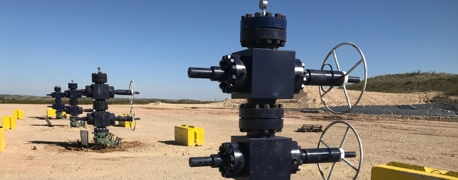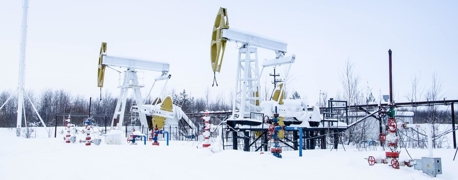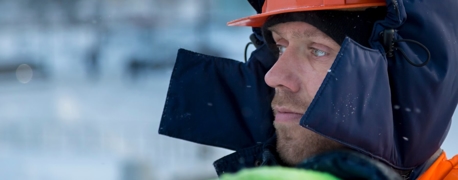A Closer Look at the World’s Most Dangerous Drilling Companies

On the night of April 20, 2010, the Deepwater Horizon oil rig, located 41 miles off the coast of Louisiana, suffered a major explosion. An uncontrolled blowout of gas from the Macondo well ignited, setting the rig ablaze. Eleven workers lost their lives, and the rig sank two days later, releasing millions of barrels of oil into the Gulf of Mexico. The disaster—one of the worst environmental catastrophes in history—wasn't just the result of mechanical failure. Investigations later revealed that several major drilling contractors and subcontractors had cut corners on safety to save time and money.
The Deepwater Horizon tragedy was not an isolated incident. In the world of oil and gas drilling, catastrophic accidents are far too common. Worse still, these tragedies are almost always preventable.
Drilling is inherently dangerous, but some companies have become synonymous with disaster, not because of what they drill, but how they operate. Whether it's putting pressure on crews to work faster, failing to properly maintain equipment, or ignoring safety concerns raised by workers, these companies have shown that when profits come before people, the consequences can be deadly.
Drilling Companies vs. Oil Companies
Oil and gas exploration often involves two main types of companies: offshore oil companies and drilling contractors. While oil companies like BP, Chevron, or Shell own the rights to drill and sell the oil, they rarely do the drilling themselves. Instead, they hire specialized drilling companies to manage the rigs, crews, and equipment.
Drilling companies are responsible for the operation of the rig, including:
- Hiring and training workers
- Managing daily operations
- Maintaining drilling equipment
- Enforcing safety protocols
In many serious offshore accidents, the drilling contractor—not the oil company—is in charge of the rig where something goes wrong. For example, during the Deepwater Horizon disaster, BP was the well owner, but the rig itself was owned and operated by Transocean, while the faulty cement work was carried out by Halliburton.
This distinction matters because the companies responsible for the drilling are often the ones whose safety practices (or lack thereof) make the difference between life and death for offshore workers.
Schlumberger (SLB)
Schlumberger, operating as SLB, is the world’s largest oilfield services provider, operating in more than 120 countries. It doesn’t own drilling rigs, but it plays a major role in offshore drilling through services like wireline logging, cementing, and well testing.
While SLB hasn’t been the public face of major disasters like some of its peers, its sheer scale and deep involvement in well operations mean that it’s often working on the front lines where mistakes can be catastrophic.
Safety & Legal History
SLB has been implicated in several incidents concerning blowouts and well control problems. Notably, the company provided cementing services for BP's Macondo well, which experienced a catastrophic blowout in 2010, leading to the Deepwater Horizon disaster. Investigations into the incident highlighted failures in cementing operations as a contributing factor. While BP and Halliburton were primary parties in the ensuing legal actions, SLB’s role in the cementing process was scrutinized during the investigations.
The issue with SLB isn’t headline-grabbing disasters; it’s the invisible risks that are introduced when a company is involved in nearly every phase of the drilling process but isn't directly accountable for rig safety or maintenance.
Baker Hughes
Baker Hughes, now part of General Electric’s oil and gas portfolio, is a leading provider of oilfield services and equipment. Like Schlumberger, it’s deeply embedded in the drilling process but not typically the operator of rigs.
Risks & Concerns
Baker Hughes was involved in the Deepwater Horizon project, supplying parts and services for the failed well. While Halliburton was responsible for the cementing work, Baker Hughes’ role in providing other services for the well has been documented.
In recent years, its name has appeared in investigations by the Occupational Safety and Health Administration (OSHA), including one tied to a fatal incident at a Louisiana site. On June 7, 2023, a 52-year-old Baker Hughes employee died at the company's facility in Broussard, Louisiana. An investigation by OSHA found that the man was struck in the back of the head and neck by a flex stabilizer that had upended. Baker Hughes was fined more than $30,000 in the wake of the tragic event.
Though Baker Hughes has made public commitments to safety and sustainability, its track record includes numerous violations, suggesting a serious gap between policy and practice.
Halliburton
Halliburton is one of the most well-known oilfield service companies in the world—and one of the most controversial, largely due to its role in the Deepwater Horizon disaster.
Haliburton was responsible for cementing the well that ultimately failed. Investigators later found that Halliburton used a flawed cement formula and skipped testing protocols that could have prevented the blowout. The company eventually agreed to a $1.1 billion settlement for its role in the disaster.
Though its role in the Deepwater Horizon disaster is perhaps its most notorious, this is not the only controversy Halliburton has faced. The company has received numerous OSHA citations, including citations for serious safety violations that led to catastrophic injuries and death on jobsites involving heavy machinery. The company has also dealt with allegations of improper chemical disposal and environmental contamination.
Halliburton's history reveals a troubling pattern: a willingness to prioritize speed and cost over worker safety and environmental integrity.
Transocean
Transocean is one of the largest offshore drilling contractors in the world. It owned and operated the Deepwater Horizon rig at the time of the catastrophic explosion that killed 11 workers, injured 17 more, and dumped 134 million gallons of oil into the ocean. At the time, Transocean was responsible for rig operations, including safety systems that failed to contain the well blowout. The company paid more than $1.4 billion in criminal and civil fines related to the disaster.
Ongoing Safety Issues
Transocean has been involved in many other incidents, including equipment failures and near-miss blowouts. For instance, a federal class action lawsuit alleged that Transocean concealed a history of failed blowout preventers, misrepresenting a series of failures as anomalies to inflate its share price. The lawsuit cited a "notice of default" issued by BP in 2000 over a faulty Transocean blowout preventer on the Discoverer Enterprise rig.
Additionally, in 2010, Transocean's Sedco 711 rig in the North Sea experienced a blowout incident similar to the Deepwater Horizon disaster. An internal company report obtained by the BBC revealed that four months before the Deepwater Horizon incident, the Sedco 711 rig, leased by Shell and operated by Transocean, faced comparable problems.
Nabors Industries
Nabors is one of the world’s largest land drilling contractors. It also has several offshore operations. Over the years, it has been cited repeatedly for OSHA violations, including citations for issues like inadequate hazard communication, unguarded machinery, worker deaths, and dangerous practices.
In 2022, OSHA fined Nabors after a worker was crushed by drilling equipment. According to the investigation report, an employee of Nabors Drilling Technologies USA, Inc. was fatally injured on July 9, 2022, while working on a drilling rig. The employee was wrapping ends of non-energized electric cables at ground level beneath an articulating grasshopper arm. A winch at the top of the arm was holding a junction box in place above the employee. The wire-rope winch line holding the junction box broke, causing it to fall onto the employee, resulting in severe head injuries and death.
Diamond Offshore Drilling
Diamond Offshore Drilling was once one of the largest drilling companies in the world, operating a fleet of offshore rigs. After filing for bankruptcy, citing downturns in the oil market, it was acquired by Noble Corporation PLC in September 2024. Diamond’s cost-cutting measures have been linked to aging rigs and inconsistent safety standards.
In 2023, the UK's Health and Safety Executive (HSE) criticized Diamond Offshore Drilling for failing to provide clear and comprehensive instructions ahead of an incident on the Ocean GreatWhite rig, which was operating on a BP project west of Shetland. During a storm on February 1, a critical component, the lower marine riser package, unintentionally separated. The HSE reported that Diamond failed to ensure proper assembly procedures, verification checks, and clearly defined roles, contributing to the equipment failure.
In the 2022 case Diamond Offshore Drilling Inc. v. Black, a Texas appellate court upheld a jury's finding that Diamond breached its duty to provide a safe workplace. The court concluded that Diamond failed to furnish safe equipment and adequate supervision, contributing to the plaintiff's injuries. The plaintiff, William Black, an employee of Diamond Offshore Drilling and a citizen of the United Kingdom, suffered third-degree chemical burns when he was exposed to AlfaNeutra, a caustic cleaning agent, while working on a piece of equipment abord the mobile offshore drilling unit, the Ocean Valiant. Black sat on a bucket containing AlfaNeutra to reach the equipment, which was located below knee level. The lid to the bucket was not properly sealed, allowing the harmful chemical to leak out and soak through Black’s clothing, causing the burn injuries.
Noble Corporation
Noble operates both floating and jack-up rigs around the world. While not as notorious as Transocean or Halliburton, its history of offshore incidents and injuries is still troubling.
Some notable incidents include:
- In August 2021, a fire broke out aboard a Noble rig in the Gulf of Mexico, leading to an emergency evacuation. An investigation revealed that the incident was likely the result of human error and damage caused by extreme weather.
- The company has had multiple worker injury lawsuits, such as the case of Versie Kimble v. Noble Drilling Corporation. These lawsuits include claims of negligence in equipment maintenance and failure to train crews properly.
Noble has invested in digital tools and analytics, but safety on the ground or at sea depends on leadership's willingness to enforce protocols without exception.
Holding the Right Parties Accountable When Disaster Strikes
Drilling companies are not dangerous simply because they are involved in a hazardous industry. They're dangerous because of how they operate. From failed cement jobs to ignored safety audits, the most devastating drilling disasters in history have stemmed from preventable mistakes. Behind each mistake is a decision: to rush a job, skip a test, ignore a risk, or silence a concerned worker.
These companies often operate behind the scenes, providing services or equipment while shielding themselves from public scrutiny. But their role in offshore drilling is central, and their accountability is essential. When rigs explode or workers are killed, it's not a mystery why. It’s the result of systemic negligence, profit-driven shortcuts, and a failure to put safety first.
The companies making billions from this dangerous work must be held to the highest standards. When they fail, they must be held accountable. Human lives depend on it.
- Categories


